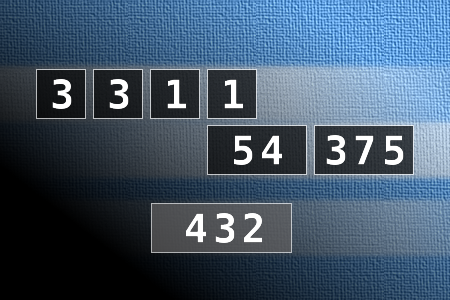Calculate the number 432
NUMBERMANIA: Calculate the number 432 using numbers [3, 3, 1, 1, 54, 375] and basic arithmetic operations (+, -, *, /). Each of the numbers can be used only once.Correct answers: 26
The first user who solved this task is Djordje Timotijevic.
#brainteasers #math #numbermania

A wife woke in the middle of t...
A wife woke in the middle of the night to find her husband missing from bed. She got out of bed and checked around the house. She heard sobbing from the basement. After turning on the light and descending the stairs, she found he husband curled up in the corner, of the basement,... crying like a baby. "Honey, what's wrong?", she asked, worried about what could hurt him so much. "Remember, 20 years ago, I got you pregnant and your father threatened me to either marry you or to go to jail?"
"Yes, of course," she replied.
"Well, I would have been released from jail this afternoon!"
"Yes, of course," she replied.
"Well, I would have been released from jail this afternoon!"

